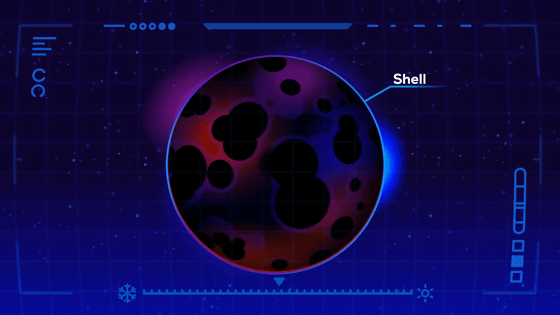What exactly is Gravaster, the evil twin of a black hole?

Black Hole's Evil Twin - Gravastars Explained - YouTube
Gravaster is a cosmic soap bubble-like entity filled with pure energy and with a shell made from the strangest material nature knows how to create. What exactly is Gravaster, what does it look like, is it merely a theoretical hypothesis, or is it something that will fundamentally change our understanding of the universe?

Supermassive stars collapse in the most dramatic way possible as supernovae. In a simple explanation of the process, in less than a second, the strings of stars collapse under the crushing force of gravity. The shells of the star surge together and collide with the collapsing core, causing it to explode, producing a light brighter than an entire galaxy.

Depending on the mass of the collapsing star, it will either compress its core into a super-dense neutron star, or it will break reality and collapse into a singularity, which would mean a black hole would form.

Apart from these two scenarios, Kurzgesagt points out that there are other cases where Gravaster occurs.

During a supernova explosion, the core of a star doesn't collapse into an infinitely dense point, but is pulverized like rock pulverized by a hydraulic press: atoms and particles collide violently and are transformed into pure energy, creating a violently expanding bubble.
And when this expanding bubble of energy collides with the mass of the surrounding collapsing star, new kinds of matter are produced that have never been observed before, but are known to be physically possible.

This is how Gravasters were born. Gravasters are like soap bubbles in space, and like black holes, they can have any mass. A typical one is about the size of the London metropolitan area and the mass of about 10 grains of sand.

Glavastar's shell is dark and the coldest in the universe, just a billionth of a degree above absolute zero. When you look at Glavastar in deep infrared light, even

But something made of known materials can't be that cold - it must be made of something completely new, unique and extreme, that doesn't even have a name yet.

Gravaster's shell is incredibly thin, even thinner than an atom, and is forged by two incredibly extreme forces that make it incredibly strong despite its thinness. As a result, it would take the energy of a supernova to stretch the entire shell by one meter.

The interior of Gravaster is perfectly simple and in a sense empty - a perfect vacuum, devoid of particles and waves. And yet it is filled with the most primal, fundamental energy in the universe.
It takes a detour to explain what this means. At the heart of it all is 'nothing.' The inside of Gravaster is like super-condensed nothingness, so we need to use simplifications and metaphors to understand what scientists have measured and calculated. At the time of writing, physics says that particles such as
Like any fluid we know, cosmic fluid must have an inherent energy. Cosmic fluid is everywhere in the universe. There is a vacuum between the particles in the air bouncing around in the room you're in, and there is a vacuum between the trillions of particles that make up your cells.

But inside a Gravstar, it's different. When a star collapses and condenses, the cosmic fluid is compressed, forming a kind of super-dense 'nothingness.' As mentioned earlier, even without waves, there is energy in the vacuum of space. But because the vacuum inside a Gravstar is super-dense, it has almost a billion or even a trillion times more energy per cubic centimeter than a normal vacuum. In other words, there is an incredible amount of energy and mass in a small space, which is exactly what a black hole is.

The intensely compressed vacuum inside Gravaster cannot be compressed any further. Like a black hole, it is at the absolute physical limit of what can be compressed without breaking the logic of physics. Gravaster's shell is itself at the very edge of what any material is physically possible. That's why Kurzgesagt described Gravaster as 'a completely black eternal object, a borderline crazy amo (Hawaiian for 'sparkle of light').'

From the outside, a Gravaster looks exactly like a black hole, as it is so cold, dark, and massive. Not only do they look like them, but they also behave very similarly, as they both severely curve the space around them, trapping mass and light in accretion disks, and slowing down time as they approach. So if you were to fall into a Gravaster, you would be torn apart by its gravity, shattered, and killed before you even hit the surface. Furthermore, once you touch its shell, the atoms that make up you would be completely broken down and converted into the vacuum energy inside, which only makes the Gravaster bigger.

Black holes were proposed over 100 years ago as an abstract solution to the equation of gravity. For over 50 years, they were considered mathematically sound but too absurd to actually exist, so few people actually believed they existed. However, scientists continued to work on them on paper, and now it is accepted that black holes exist in theory.

Gravasters are also a relatively new idea, but they are a concept that can be physically proven without

However, black holes have
When two black holes collide, a large amount of gravitational waves are produced.

In contrast, when two Gravasters collide, only a faint echo is left behind.

Although there are differences in the waves produced by the collision, actually distinguishing them is extremely difficult, 'like trying to tell the difference between two musical instruments through a thick concrete wall.'

Humanity has made incredible progress in trying to detect this difference, but as of the time of writing, we have yet to measure the difference between a gravaster and a black hole.

Related Posts:







